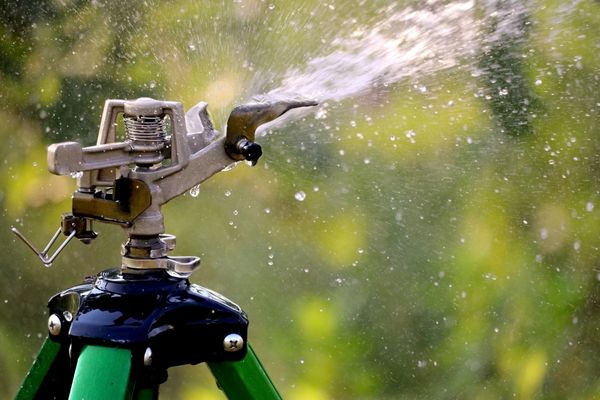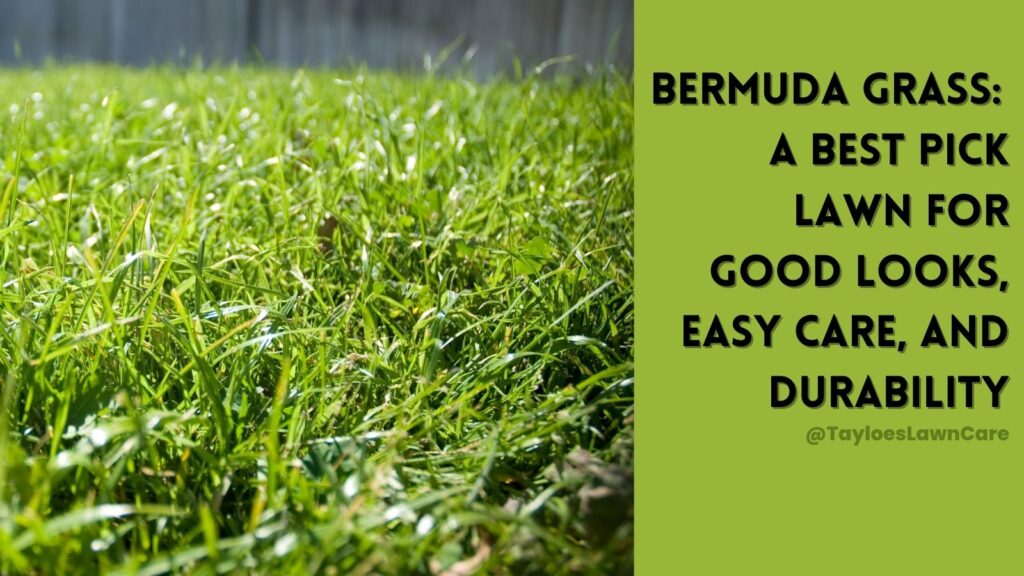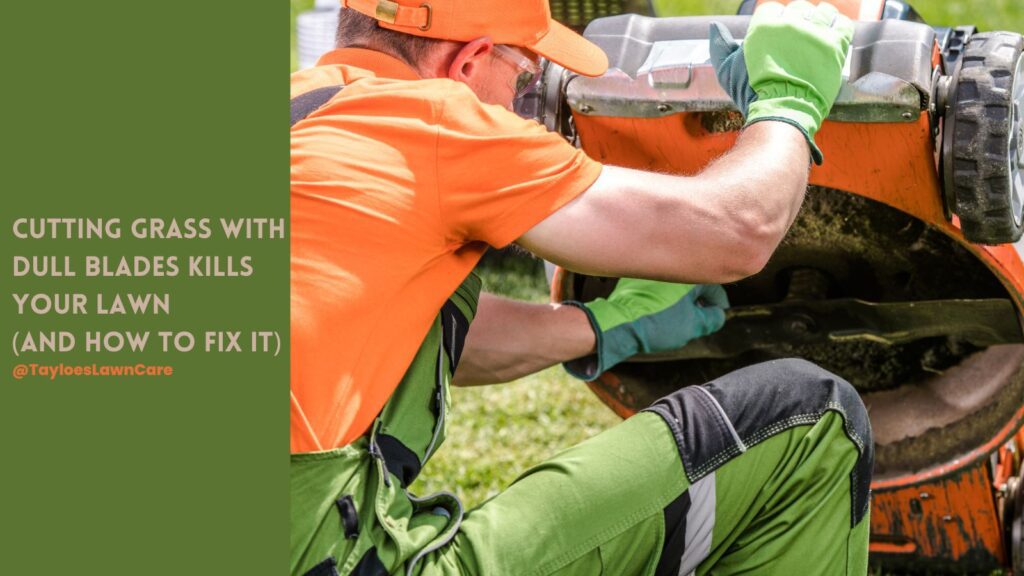Last Updated on: 30th October 2023, 02:14 pm
Try this warm weather turfgrass–it can take scorching summers.
Zoysia grass is a popular warm-season turfgrass in lawns, golf courses, and other landscapes. Its scientific name is Zoysia japonica, and it is native to Southeast Asia. Zoysia grass is known for its dense, lush growth, which makes it an attractive option for homeowners who want a lawn that looks great and is easy to maintain.
Zoysia is a highly drought-tolerant grass–it is the secret to that healthy, green grass even during the peak of our summer heat.
Six Convincing Reasons to Grow Zoysia
Here are six reasons that explain why you should consider installing Zoysia grass for your lawn:
- Drought Tolerance: This species is a highly drought-tolerant grass, and it can withstand long periods of dry weather without becoming damaged or turning brown. This ruggedness makes it an ideal choice for homeowners who live in areas with water restrictions or who want to conserve water.
- Low Maintenance: Zoysia grass is a low-maintenance turfgrass that requires minimal care once it strengthens. It doesn’t need to be mowed as frequently as other grasses and is relatively weed-resistant, so you may not have to spend as much time and money on lawn care.
- Dense Growth: This species has a dense growth pattern, which can choke out weeds and other undesirable plants that might invade your lawn. It is also an excellent choice for erosion control on slopes and hillsides.
- Soft Texture: Zoysia grass has a soft, lush texture that is pleasant to walk barefoot. It is also less likely to cause allergies than other grasses, making it an ideal choice for families with children and pets.
- Disease Resistance: Zoysia grass is relatively disease-resistant, making it less likely to develop fungal infections and other diseases that can damage your lawn. This trait can save you money on lawn treatments and reduce the risk of your lawn becoming unsightly.
- Versatile: Zoysia grass is a versatile turfgrass perfect for various applications, from residential lawns to golf courses, parks, and other public spaces. It is also adaptable to several soil types and can tolerate salt spray, making it a good choice for coastal areas.
How to Grow Zoysia Grass
Zoysia grass is a warm-season grass that thrives in hot weather and goes dormant in the winter. The best time to plant your lawn is in late spring or early summer when the soil temperature is above 70°F.
You may grow this grass species from seed, sod, or plugs. Sod is the quickest and most effective way to establish a new lawn but it carries a hefty price tag. Because of the high cost of sodding, most people invest in plugs or seeds.
- Prepare the soil before installing the plugs or planting seeds: Start by removing weeds and debris, loosening the soil, and adding organic matter to improve soil structure and fertility. The soil pH should read between 6.0 and 7.0.
- Plant the seed or insert the plugs. Water the newly planted grass deeply and regularly for the first few weeks until they establish and strengthen. After that, reduce watering to once or twice a week, depending on the weather and soil moisture.
Watering Needs for Zoysia Grass
Zoysia grass is drought-tolerant and can survive prolonged periods of dry weather. However, it still needs regular watering to thrive and stay healthy. The general rule for watering zoysia grass is to provide one inch of water per week through rainfall or irrigation. This can be accomplished by watering deeply and infrequently rather than frequently and shallowly. It is also important to water early in the morning to reduce the risk of disease and evaporation.

Care Tips for Zoysia Grass
Zoysia grass is a low-maintenance turfgrass that requires minimal care once established. However, there are a few care tips you can do to keep it looking its best:
- Mowing: Cut this grass to a height of around two inches. Mow regularly to avoid removing too much of the grass blade at once.
- Fertilization: Zoysia grass requires minimal fertilization, but you should plan to apply a slow-release fertilizer in late spring or early summer to promote growth and green-up.
- Weed control: Zoysia grass is relatively weed-resistant but can still invade the lawn. Apply a pre-emergent herbicide during the spring to prevent weed seeds from germinating, and spot-treat any weeds that appear.
- Aeration: Zoysia grass can become compacted over time, inhibiting root growth and water absorption. Aerate the lawn every year or two to improve soil structure and promote healthy growth.
USDA Growing Zones (It Is Best-Suited for Moderately Warm to Hot Regions)
Zoysia grass is a warm-season grass that thrives in hot, humid climates. It is well-suited for USDA growing zones 7-10. These include the southern United States, from Texas to Florida and up the East Coast to Virginia. However, specific varieties, such as Zoysia matrella, can also grow in cooler regions, such as USDA zone 6.

The Takeaway: Zoysia Is Great-Looking, Soft Underfoot, and a Drought-Tolerant Grass
Zoysia grass is a beautiful, low-maintenance turfgrass that can thrive in various climates. By following the growing and care tips outlined in this content, you can grow a healthy, lush lawn that will become the envy of your neighborhood. If you loved this content, please follow Tayloe’s Lawn Care Services on Facebook, where you can receive all our lawn care, landscaping, and gardening videos and articles.
Author Profile

- Deborah Tayloe is the CEO and co-founder of Tayloe's Lawn Care Services, LLC. She has a B.S.Ed and holds certificates in soil and water management and herbology from accredited programs.
Latest entries
 GardeningSeptember 27, 2025What perennials, shrubs, and trees don’t like fall pruning (and why)?
GardeningSeptember 27, 2025What perennials, shrubs, and trees don’t like fall pruning (and why)? Trees and ShrubsSeptember 14, 2025Fall Shrub Pruning Guide (September–October)
Trees and ShrubsSeptember 14, 2025Fall Shrub Pruning Guide (September–October) Trees and ShrubsApril 22, 2025Boxwood Blight: Early identification and isolation
Trees and ShrubsApril 22, 2025Boxwood Blight: Early identification and isolation Flower GardenApril 8, 2025John F. Kennedy Rose: Hybrid tea rose with elegant white blooms
Flower GardenApril 8, 2025John F. Kennedy Rose: Hybrid tea rose with elegant white blooms






Pingback: Brown Spots In Your Grass? Here Are 10 Possible Causes